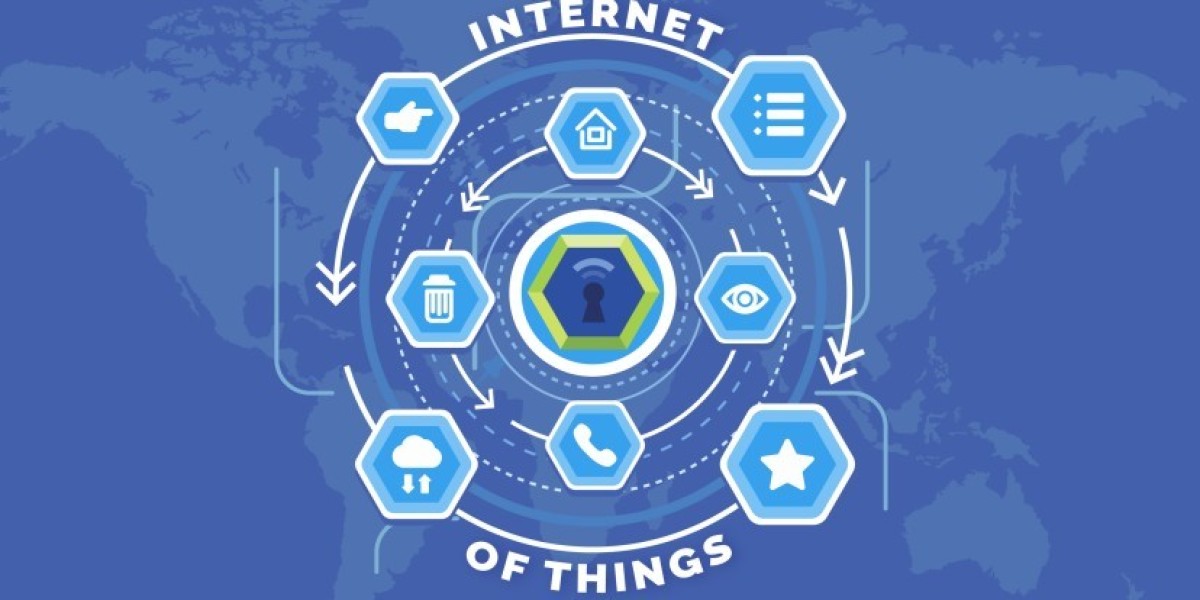The Internet of Things (IoT) is rapidly reshaping how devices, people, and systems connect and interact. From smart homes to advanced industrial monitoring, IoT technologies are opening up new possibilities in nearly every industry. As this field continues to expand, emerging innovations are addressing critical challenges, enhancing performance, and driving new applications. Here’s a look at 12 emerging IoT Technologies driving the evolution of IoT today.
Top 12 Emerging IoT Technologies
1. IoT Security
Ensuring the safety of IoT devices and networks is crucial as the technology grows. Security solutions will be essential to protect IoT platforms and devices against cyberattacks, unauthorized access, and other vulnerabilities, such as battery-draining denial-of-sleep attacks. However, many IoT devices run on basic processors that may not support advanced security features, which makes safeguarding these systems more challenging.
2. IoT Device Management
Effective device management is necessary to handle location, context, and real-time data requirements, all while maintaining consistent data taxonomies. This technology allows IoT solutions to go beyond traditional data management by adapting to the unique characteristics of diverse data sources, supporting the complex demands of an IoT-driven ecosystem.
3. IoT Analytics
To harness the full potential of IoT data, advanced analytics are needed to develop new algorithms, data models, and machine learning methods. By distributing analytics across secure IoT networks, businesses can create data-sharing platforms that enhance the insights available from IoT systems.
4. Low-Power Short-Range IoT Networks
Short-range networks that require minimal power are set to lead wireless IoT connectivity by 2025, surpassing the wide-area networks currently in use. This trend will support the development of energy-efficient, short-range IoT applications, particularly for indoor or localized environments.
5. Low-Power Wide-Area Networks (LPWANs)
Wide-area networks with low power requirements are crucial for IoT applications needing extended coverage, long battery life, and minimal operational costs. Current cellular networks often fail to provide an optimal mix of features for these needs, making LPWANs a practical choice for applications with limited bandwidth and specific hardware requirements.
6. IoT Operating Systems
Compact, lightweight operating systems are gaining popularity as they are more suited to IoT devices than traditional systems like Windows or Mac. These smaller systems provide essential functions without the high resource demand, making IoT development more efficient and cost-effective for businesses.
7. IoT Ecosystems and Standards
Standards and ecosystems are critical to ensuring that IoT devices can seamlessly connect and exchange data. APIs and protocols are at the heart of this integration, supporting a range of business models that depend on collaboration across devices and organizations.
8. Event Stream Processing
IoT applications often produce vast amounts of data in real time, which must be analyzed continuously. Event stream processing platforms have emerged to meet these high-throughput demands, enabling IoT systems to process data rapidly for instant insights and pattern recognition.
9. Mesh Sensors
Mesh sensors offer a more dynamic approach to tracking various physical metrics. Integrated into items like wearables, these sensors can monitor movement, heart rate, and body position in real time. For example, Cipher Skin’s BioSleeve uses mesh sensors to map body movement in 3D, benefiting applications from physical therapy to high-performance athletics.
10. Containers for MCU Devices
Microcontroller units (MCUs) power countless IoT devices, from home appliances to industrial sensors. Container technology for MCUs supports better application distribution and management, improving scalability and simplifying maintenance for IoT networks.
11. Battery-Free Sensors
Battery-free sensors represent a significant advancement by removing the need for frequent maintenance and replacement. These sensors draw power from sources like indoor solar, thermal energy, and vibrations, potentially allowing them to operate autonomously for years in environments that support massive sensor deployments.
12. Network Slicing for IoT Applications
As 5G networks expand globally, network slicing enables the customization of connectivity for different IoT requirements, such as latency, stability, and bandwidth. With this capability, companies can ensure that critical IoT applications, such as healthcare or industrial automation, have the reliable, high-speed connectivity they need to function optimally.
Final Thoughts
The IoT landscape is poised for substantial growth, with millions of devices expected to come online in the coming years. Yet, only a small fraction of IoT data is currently analyzed, highlighting a major opportunity for these technologies to improve efficiency and innovation. Each of these advancements contributes to the ongoing progress in IoT, bringing new solutions and possibilities that could change industries worldwide.









